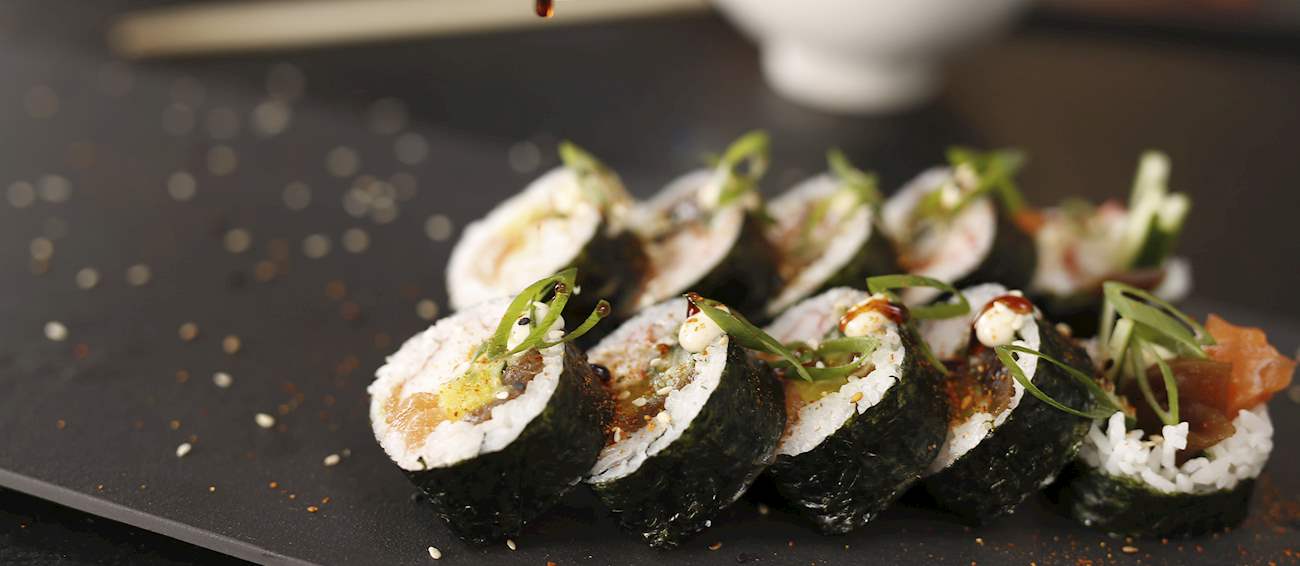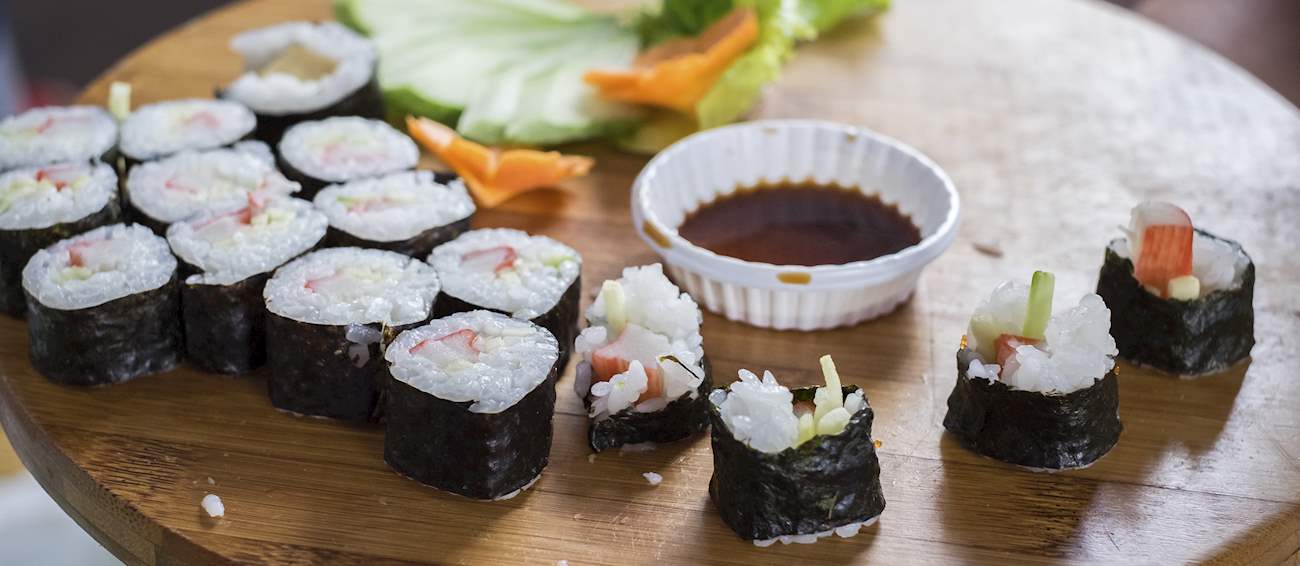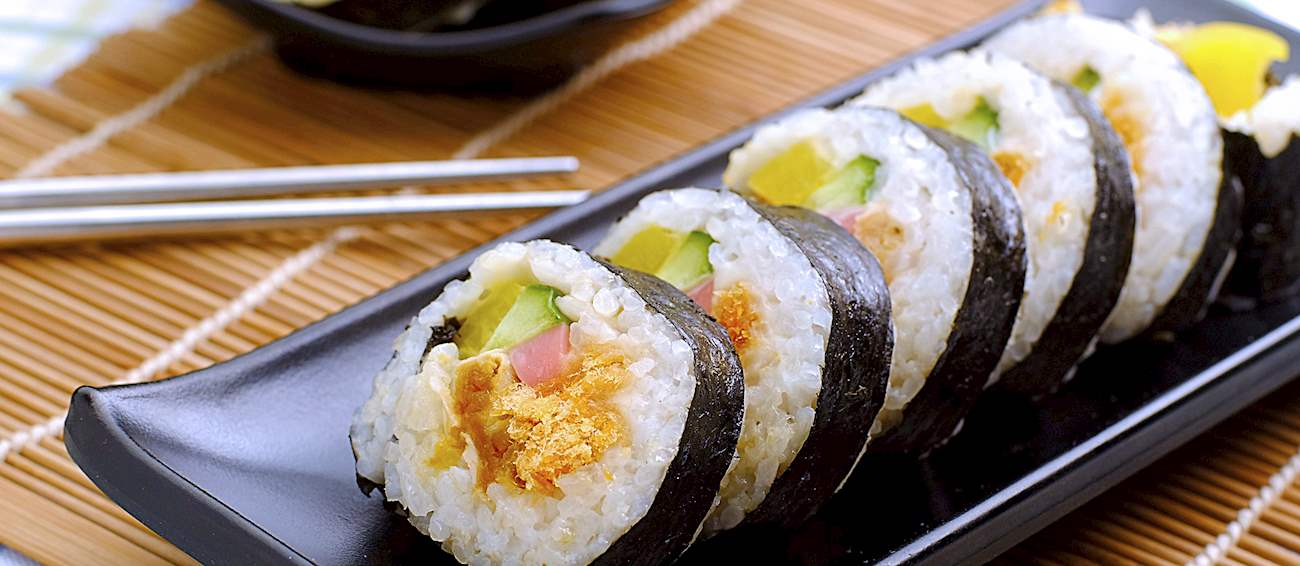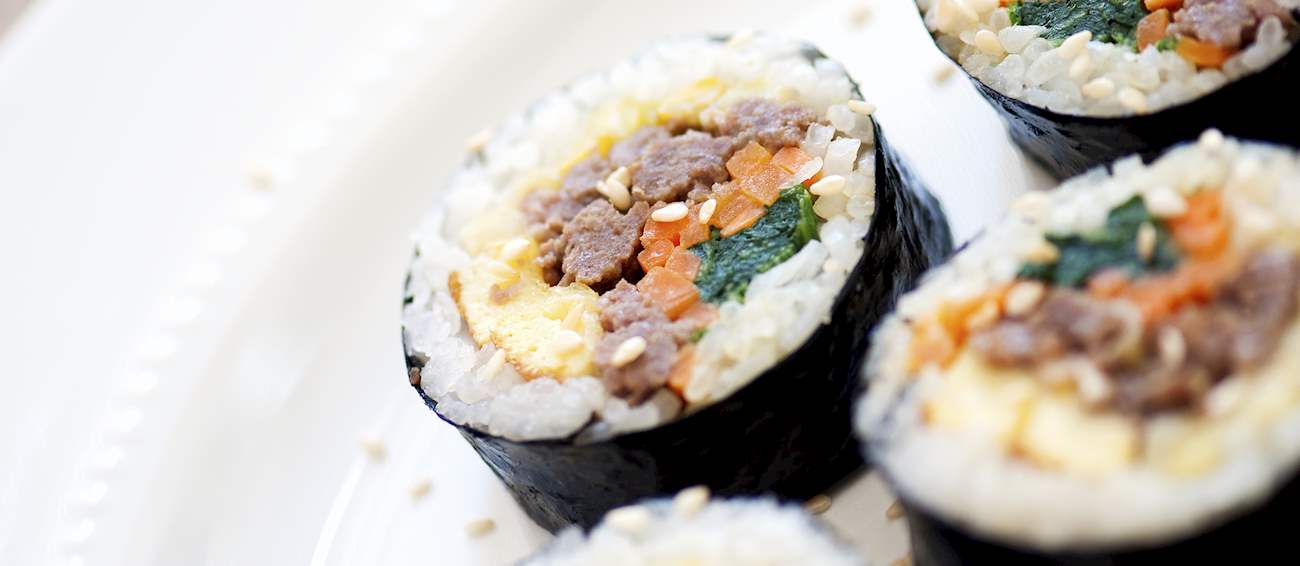Gimbap
(김밥, Gim Bap, Kimbap, Gimbab, Gim Bab, Gimbop, Gim Bop, Gimbob, Gim Bob, Kim Bap, Kim Bab, Kimbop, Kim Bop, Kimbob, Kim Bob, Korean Sushi)
Often referred to as Korean sushi, gimbap is a Korean dish consisting of seaweed (gim), seasoned rice (bap), and other, optional ingredients that are usually rolled, sliced, and served. Almost anything can be added to the roll, but the most common ingredients are fishcakes, meat, spinach, eggs, and cucumbers.
There are several theories about the origin of gimbap. Many believe that it is a Korean take on Japanese sushi. Others say that it is a variation of gimssam, a wrap consisting of rice and seaweed. Regardless of the origins, gimbap remains one of the most popular Korean dishes.
There are three main styles of gimbap, and there are numerous variations within each of them. There is traditional gimbap with seaweed, rice, and fillings, French or Nude gimbap with seaweed on the interior and rice on the exterior, and Samgak gimbap, shaped like a triangle and sold in many South Korea's convenience stores.
Recipe variations
Classic Kimbap
READY IN 2h 15minThis recipe was adapted from visitkorea.or.kr, the official site of the Korea Tourism Organization, and Hansik.org, the official site of the Korean Food Foundation. It describes how to make a classic kimbap with stir-fried beef and vegetables.
Kimbap with Odeng and Bulgogi
READY IN 1h 5minThis version of kimbap combines beef and seafood cake with spinach, carrot, and pickled daikon radish, and is adapted from seriouseats.com.
Samgak Gimbap
READY IN 1h 15minThe following recipe shows how to make a triangle-shaped samgak gimbap with either a tuna or a kimchi filling. Triangular shaping molds help in forming the individual samgak kimbaps, but they can be replaced with plastic foil. Also, this version of kimbap is wrapped in specifically prepared laver seaweed, which usually contains wrapping instructions inside. The recipe is adapted from the website of Emily Kim, also known as Maangchi, a South Korean-born American YouTuber and author that The New York Times has proclaimed "YouTube's Korean Julia Child."
Gimbap Authentic recipe
This recipe was adapted from visitkorea.or.kr, the official site of the Korea Tourism Organization, and Hansik.org, the official site of the Korean Food Foundation. It describes how to make a classic kimbap with stir-fried beef and vegetables.



























